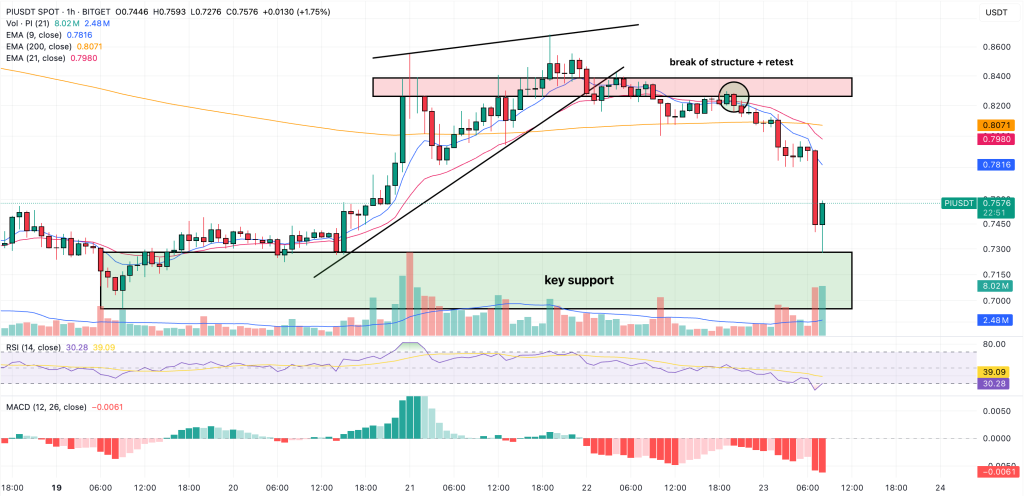While overall college enrollment fell .5% this spring compared to a year ago, community college … [+]
getty
Overall college enrollment fell about .5% in spring 2023 vs. spring 2022, a loss of about 93,000 students overall. That’s one of the main takeaways from the newest higher education enrollment report from the National Student Clearinghouse Research Center (NSCRC), which gives its final enrollment estimates for the spring 2023 semester.
At the undergraduate level, the large pandemic-era enrollment declines showed signs of leveling off, with overall undergraduate enrollment for the spring term down only about .2% or 25,000 fewer students, a much smaller loss than in the prior two years.
By contrast, graduate-level enrollment is not doing as well, declining by -2.2% or 68,000 students compared to spring 2022, wiping out much of the gains it saw during the roughly two years of the pandemic. The drop in graduate enrollment was almost entirely due to losses in master’s programs (57,000 fewer students).
Even as the undergraduate slide begins to stabilize, total postsecondary enrollment continues to be substantially below pre-pandemic levels, down about 1.09 million students overall and about 1.16 million undergraduates alone, compared to spring 2020.
There was one bright spot in the new enrollment data. Community college students increased slightly, up 0.5% or 22,000 more students compared to spring 2022. That increase was driven largely by a growing number of younger students, primarily dual-enrolled high school students and freshmen.
Dual-enrolled high school/community college students were up 8%, equal to 49,000 more students under age 18. In addition, there was a 1.1% increase in 18- to 24-year-old community college enrollment, equating to 24,000 more students. Since 2019, the median age of a community college student has dropped by more than a year (down 1.2 years from 20.7 to 19.5 for men and 1.3 years from 20.4 to 19.1 for women.
Overall, higher education enrollment of older students (those older than 24 years) is eroding, with a total decline of 3.3% among this age group, including a loss of 3.8% among community college student of this age.
Another encouraging outcome was the fact that freshman enrollment was up 9.2% from spring 2022, although, as the report notes, percent increases in spring freshmen don’t translate into large numbers of students overall because they are based on a smaller scale than freshmen enrollments in the fall.
Most of the increase in spring freshmen (53.9%) was accounted for by enrollment in community colleges, which had a 12.4% increase, the largest of any higher education sector.
The report also found that undergraduate students are shifting the types of credentials they are pursuing, moving toward shorter-term, vocationally oriented programs. Enrollments in bachelor’s degree programs fell more steeply than associate degree programs (-1.4% or -114,000 students vs. -0.4% or -15,000 students), with other sub-baccalaureate credentials showing enrollment growth (+4.8% or 104,000 more students).
“Despite encouraging signs of recovery among younger students at community colleges, overall undergraduate enrollment is still well below pre-pandemic levels, especially among degree-seeking students,” said Doug Shapiro, executive director of the National Student Clearinghouse Research Center. “With the pandemic now behind us, a new set of factors appears to be preventing students from returning to campuses. And these new factors are having a stronger effect on students who are seeking bachelor’s degrees than on associate-seekers.”
Other findings:
Female enrollment declined by 1.2% (118,000 fewer students), while male enrollment grew 0.4%, or 25,000 more students. These latest results continue the recent trend of improved college enrollment for men relative to women, first seen in the second pandemic year (fall 2021).
In terms of college majors, computer science at four-year institutions reached its highest growth rate in three years, seeing a gain 11.6% or 62,000 more students in spring 2023. Likewise, at two-year colleges, computer science enrollments are now above pre-pandemic levels, reversing three years of flat or declining numbers (up 9.7% or about 20,000 students). Healthcare and education program enrollments continued to fall across two- and four-year institutions alike.
About the National Student Clearinghouse® Research Center™
The NSCRC is the research arm of the National Student Clearinghouse. It collaborates with higher education institutions, states, school districts, high schools, and educational organizations to gather accurate longitudinal data that can be used to guide educational policy decisions. NSCRC analyzes data from 3,600 postsecondary institutions, which represented 97% of the nation’s postsecondary enrollment in Title IV degree-granting institutions in the U.S., as of 2020.
This latest NSCRC Current Term Enrollment Estimates report provides the most recent national enrollment estimates by degree level, institutional sector, enrollment intensity, age group, gender, and major field, as well as state-level enrollment estimates.
Credit: Source link










